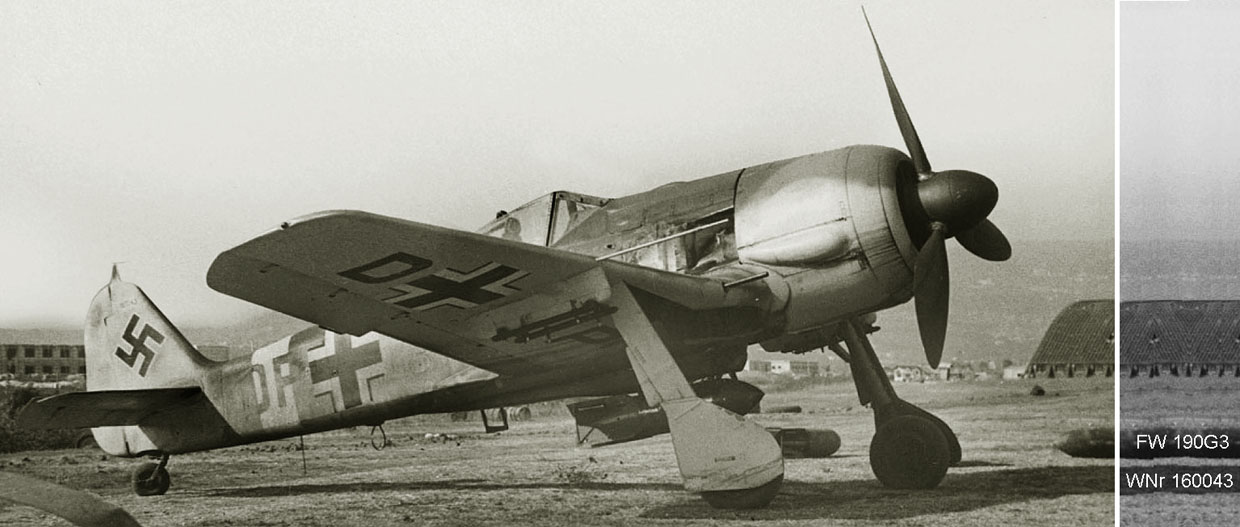
Aviation of World War II


 |
Aviation of World War II |


|
|
Soviet Union | Lend - Lease | Facts | Forum | Germany | Japan | R A F | U S A A F | Other | Photos |
|
|
FW-190GFighter-BomberFocke-Wulf
Fw 190G-1 was produced in the amount of 50 pieces. based on the A-4 series. The maximum flight range with two outboard tanks was 1500 km, and with one - 1050 km. The G-2 series was built on the basis of the A-5 airframe and was no different from the G-1. A small series of G-2 / N, equipped with special flame arresters and landing lights in the leading edge of the left wing, was released especially for night operations. Since October 1943, both of these versions have been replaced by the G-3 series, equipped with the PKS 11 autopilot. Some examples were equipped with BMW 801D-2 engines with a high-octane gasoline injection system into the left inlet, which made it possible to increase power at low altitudes from 1700 up to 1870 HP Small arms were supplemented by two MG 17s above the engine. There was a modification of the G-ЗТр with a tropical filter. Some of the vehicles were equipped with the “Kuto-Nause” balloon barrier system. On the G-7, an elongated tail wheel strut provided ground clearance for large loads. The last production version of the G-8 was produced from September 1943 to February 1944 based on the A-8 series airframe. It was a simplified version of the G-8 without the "Kuto-Nause" system with two bomb racks under the wing. There were two field modifications: R4 (nitric oxide injection system) and R5 (two protected wing tanks). |
|
|
In detail
Bibliography
|